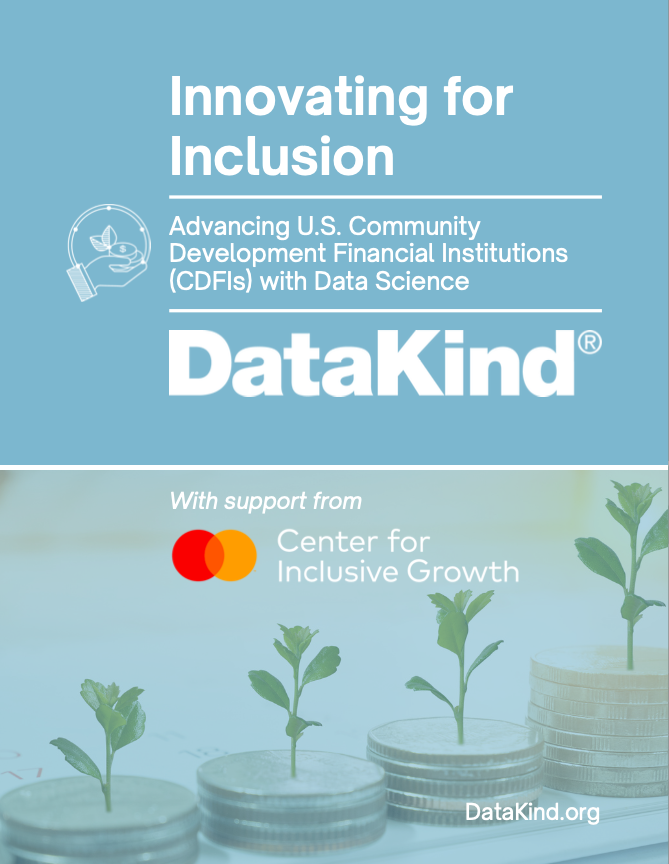In the US, tens of millions of Americans are unbanked, meaning they have no formal checking or savings account, or underbanked, meaning they primarily use nonbank services such as money orders and payday loans. There are many complex reasons why this is the case, ranging from systemic social injustices to documented status to lack of trust in the banking industry, but the effects are damaging in both the short and long term. The main impact is clear: financial exclusion is expensive and inflexible, charging high rates and fees to those who are least able to afford it, and reducing the ability of households and businesses to weather disruptions to their income.
Community Development Financial Institutions (CDFIs) are uniquely situated to address the financial needs of underinvested markets. DataKind’s new landscape, Innovating for Inclusion: Advancing US Community Development Financial Institutions with Data Science, reviews the history and role of CDFIs in financial inclusion, key challenges the industry faces, stakeholders, and data science opportunities. At this moment, demand for the services of CDFIs is growing, yet there are core issues affecting their ability to grow: 1) their target markets constrain them, 2) their resource-intensive approach and small size reduce their capacity for scaling, and 3) they lack access to the most cutting-edge technologies that are standard in the banking sector overall. Fortunately, these challenges are an opportunity for data science to intervene.

DataKind’s analysis found that data systems support is needed across all areas of CDFI business operations to better coordinate efficiencies and actionable insights. The landscape find a number of ways data science can help CDFIs find markets, reach customers, measure their performance, and leverage the same kinds of tools that private-sector banks and traditional financial institutions have used to serve their customers. This analysis finds a number of options for data science to help CDFIs find markets, reach customers, measure their performance, and leverage the same kinds of tools available to private-sector banks.
The current CDFI landscape presents challenges that demand careful consideration and innovative solutions. These multifaceted challenges center around technological capacity, data systems, and data analysis, creating an exciting opportunity for data science to enter this space as a partner to CDFI and investors. At the same time, it’s important to understand that tools like machine learning, AI, and algorithmic automation must be tempered with the reality that data are not collected, created, or analyzed in isolation and often carry with them remnants of bias and injustice and risk being perpetuated. With responsible and ethical use of data science tools, CDFIs can strengthen their position and contribute more effectively to greater economic equity.



